Feast of san juan: San Juan bonfire festival, summer solstice
San Juan bonfire festival, summer solstice
Header Banner – Google Adsense
| Admiring the pre- bonfire artworks © Michelle Chaplow |
San Juan
The Magical Night of San Juan
Certain festivals seem to summarise life in Spain, with its love of having a good time in the company of friends and loved ones. The Night of San Juan is definitely one of these events. It is a celebration that is usually held on the beach with roaring bonfires, drink, food, and friends. It is a memorable, almost surreal scene and one that needs to be experienced.
The summer solstice remains a magical night in much of the northern hemisphere. Mythology states that strange things can occur on this shortest night of the year. Certain pagan gods, for instance, make themselves visible during this night and we mere humans also give thanks and realise that the seasons of harder times are still to come.
So welcome to the magical night of San Juan. San Juan is all about changes. It is about night and day; fire and water. Fire purifies and water recuperates, refreshes, and rejuvenates.
Bonfires are the theme of the night. Men and women, young people and children all spend time building these bonfires. According to tradition, if people jump over a bonfire three times on San Juan’s night, they will be cleansed and purified, and their problems burned away.
In Andalucia, San Juan is celebrated on the night of June 23rd with some towns, such as Almuñécar, in Granada, allowing the beaches to be used as campsites for a single night. On the beaches of Malaga it’s common to see people jumping over fires which, according to legend, cleanse the body and the soul. Jumping in the sea at midnight is supposed to be a way to wash away evil spirits.
It is ritual that rules at San Juan. After midnight, for example, people wash their faces and feet three times in order to be granted three wishes and for a happy twelve months thereafter. Bathing at this time is also said to be beneficial for skin complaints. Traditionally, the Spanish did not visit the beach until this day in each year. The sight of hundreds and even thousands of people wandering into the water after midnight with the haze of bonfires everywhere can be close to awe inspiring.
Bathing at this time is also said to be beneficial for skin complaints. Traditionally, the Spanish did not visit the beach until this day in each year. The sight of hundreds and even thousands of people wandering into the water after midnight with the haze of bonfires everywhere can be close to awe inspiring.
As well as the bonfires that burn continuously, there are also muñecos or dolls that are burnt. This is usually done around midnight. Originally, the effigies were supposed to represent Judas Iscariot but now, the religious relevance seems to have become secondary to the enjoyment factor.
| Families gather around the mesmering San Juan bonfires. |
Estepona
In Estepona there has been a competition since the 1970’s called ‘Quemando los Bigotes de San Juan’ (Burning the moustache of San Juan) the moustache is a euphanism for ‘bad people’ since bandeleros (bandits) often had moustaches.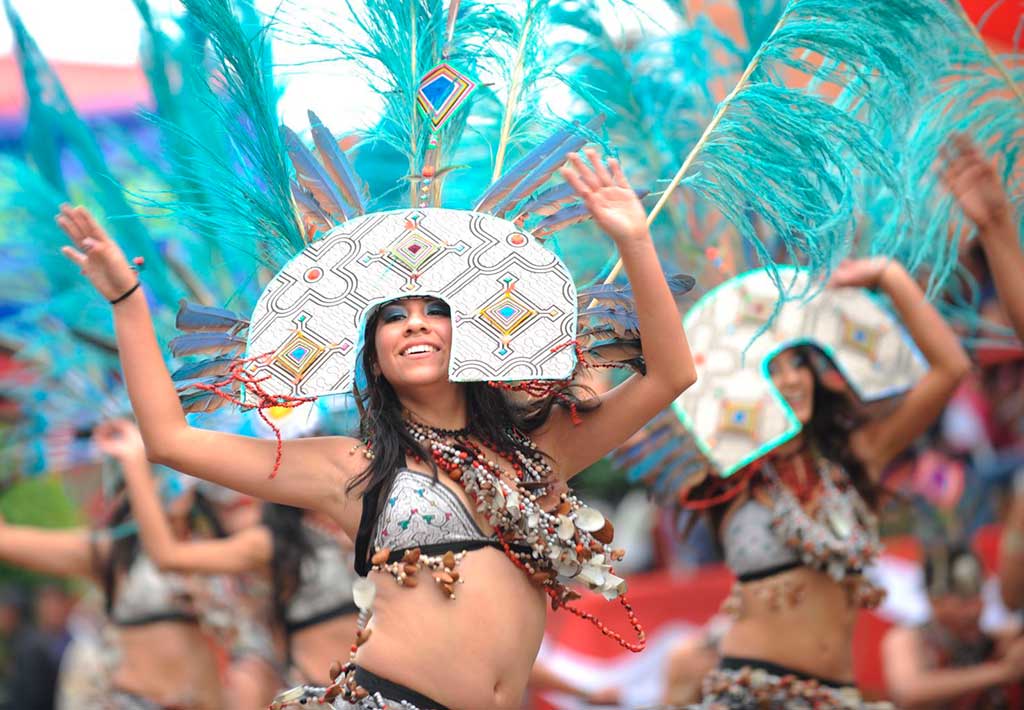 Quite often the dolls are made up to represent local, national or international personalities who are infamous. Some of the effigies can be quite elaborate. The winning entries are ritually burned on the beach just after midninght. The burning of these effigies is supposed to bring good luck but quite often, it is just good fun and it makes a great spectacle. The best place to join the festivitites in Estepona is La Rada Beach near the centre of the old town. A stage is set up for a free concert in the evening.
Quite often the dolls are made up to represent local, national or international personalities who are infamous. Some of the effigies can be quite elaborate. The winning entries are ritually burned on the beach just after midninght. The burning of these effigies is supposed to bring good luck but quite often, it is just good fun and it makes a great spectacle. The best place to join the festivitites in Estepona is La Rada Beach near the centre of the old town. A stage is set up for a free concert in the evening.
Generally
Depending where you experience San Juan, you might find yourself almost entranced by the spectacle. In some places, hundreds upon hundreds of fires dot the coastline. The smell of smoke permeates the air and there is a feeling of camaraderie that crosses age, culture, and background.
So make sure that you reserve the night of June 23rd for La noche de San Juan. Bring plenty to drink, something to eat, carry a sweater if you are going to be near the water, and be prepared to see the sun rise on the morning of the 24th.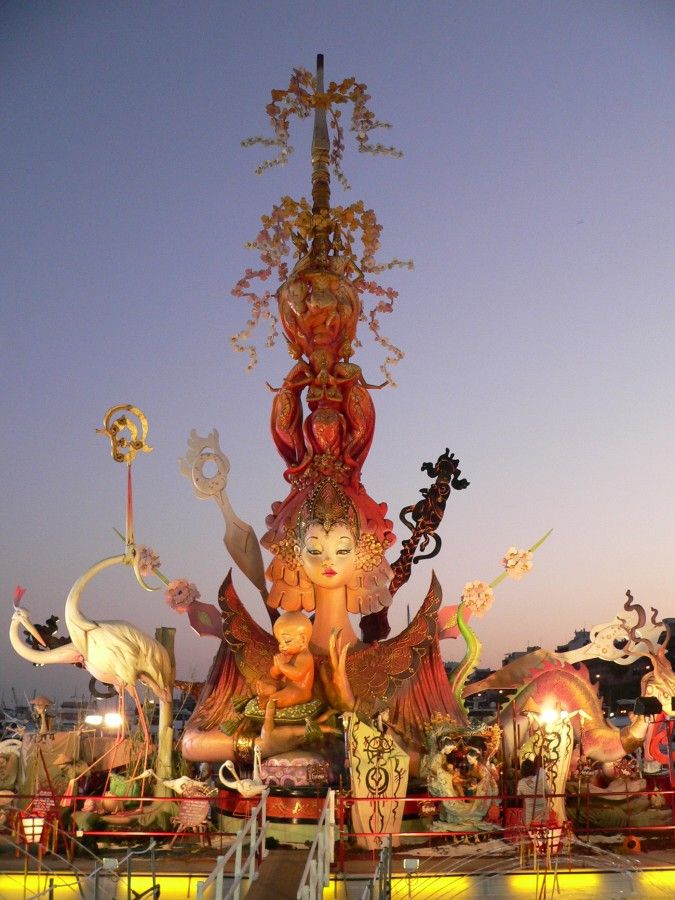 There are always concerts, music, and other types of entertainment to keep revelers interested all night long, as if watching the beauty of the bonfires were not enough. Purify and enjoy.
There are always concerts, music, and other types of entertainment to keep revelers interested all night long, as if watching the beauty of the bonfires were not enough. Purify and enjoy.
See and Do
History and Origin of the Feast of St. Juan
07 Jul FEAST OF ST. JUAN
Posted at 01:11h
in Blog
by spanishmyworld
Every year, the Feast of San Juan is celebrated in different parts of Europe.
But what is this celebration about? Why is it so important? In which cities is it celebrated? What is its origin?
ORIGIN
In the Celtic culture, the Druids celebrated the arrival of the solstice (moment of the year when the Sun, in its apparent movement, passes through one of the points of the elliptic farthest from the Equator and when the maximum difference in length between day and night occurs) of summer by lighting large bonfires, seeking the blessing of land, men and livestock.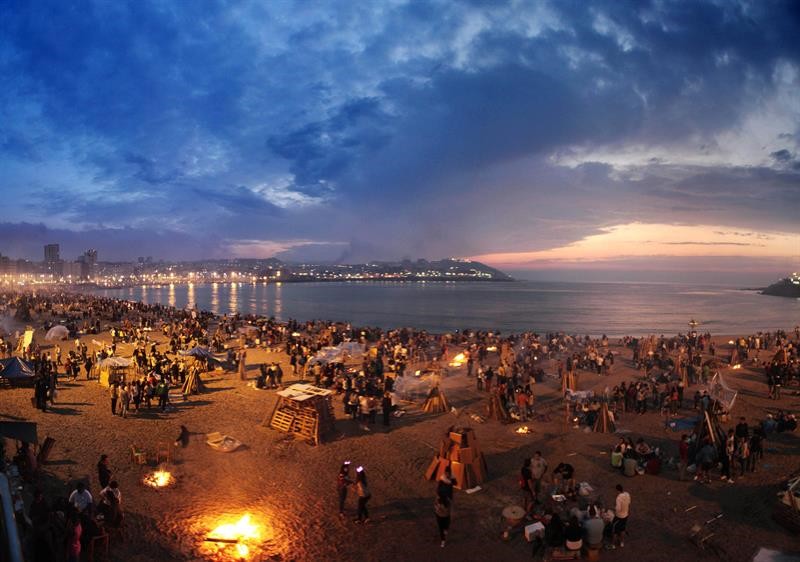
The Greeks lit purifying bonfires in honor of Apollo: god of the sun and light.
The Romans dedicated to their goddess Minerva festivities with fire as the protagonist.
In Mexico, Aztec warriors performed rituals to worship the sun so that fire would help the earth and men to obtain good harvests.
The Berbers of northern Morocco and Algeria have been lighting bonfires for centuries in village squares and places that need to be purified.
For the Hindu tradition, the summer solstice represents the way of the ancestors. The ashes of the bonfires were kept all year long.
Christians celebrate the night of st. Juan on June 23 in honor of the birth of St. John the Baptist.
It was originally an adaptation of the pagan cult to the teachings of the Bible based on the great bonfire that Zechariah lit after the birth of his son Juan.
CELEBRATION
Saint Juan is the Saint celebrated by the Church on June 24: the day of his birth (he is the only saint whose birth is celebrated).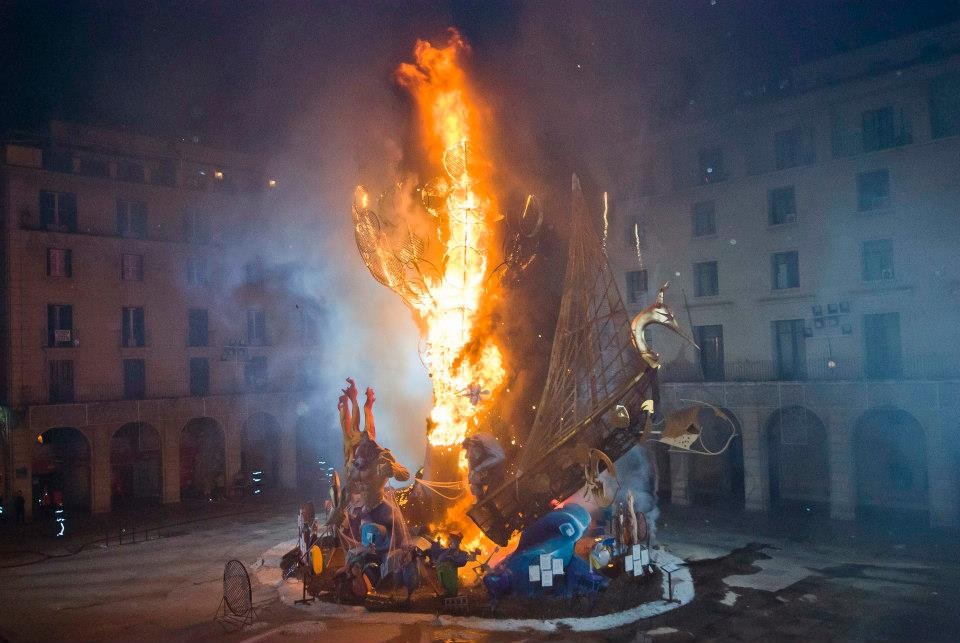
He is the most celebrated Saint in Europe and one of the most important Saints for Christians since he is considered the forerunner of Jesus Christ.
It is said that during the summer solstice, these people lit large bonfires to seek the blessing of their lands and ensure that they bore enough fruit to feed themselves. In addition, through the fire they asked the divinity for a prosperous future for couples in love and fertility for women.
The Feast of St. Juan is originally linked to the arrival of the summer solstice (June 21), of pagan origin that was later Christianized.
After the Christianization of this festival, the night of June 23rd to 24th becomes a holy night, sacred and of purification, without abandoning its magical and pagan aura. It is celebrated as the shortest and most magical night of the year.
Every year on the night of June 23rd to 24th and 24th, festivities are held in many corners of Spain in honor of St. Juan. Numerous beliefs and rites are linked to the day and to the Saint, reminiscent of ancient cults that were celebrated at the arrival of the summer solstice.
Symbols of this celebration:
- Fire: is the purifying element that rids us of bad luck and everything we want to leave behind.
- Water is the second symbol of San Juan, it is said that tonight all waters have healing virtues, so in many places it is customary to bathe in the sea or river.
- Herbs are the third element, it is believed that plants multiply their healing properties on this night.
The evening of the Night of San Juan 2021 is the moment when thousands of people welcome the summer on the shortest night of the year.
To attract good luck and put aside bad omens without having to resort to good luck charms, each city decides to celebrate the night of San Juan with its own idiosyncrasies.
Rituals for good luck
On Midsummer’s Eve, it’s not just bonfires that are lit. The long tradition that drags the festival has made it come with a high load of spirituality and above all, rituals that seek to face the new stage of the year with the favor of luck.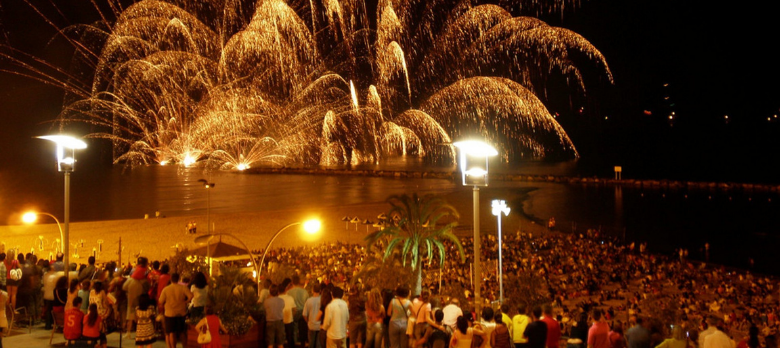 Some of the most famous are these:
Some of the most famous are these:
A couple jumps over a bonfire during the night of San Juan in Hungary | EFE
- Jumping over the bonfire: this is one of the most widespread good luck rituals in Spain although it has nuances depending on the area in which it is carried out. In Galicia it is considered necessary to jump the bonfire nine times over the flames for good luck, while in the Alicante and Valencia areas it is only necessary to jump over the flames seven times.
- Jumping the waves: another tradition is to jump the waves at midnight, although the number may vary depending on the region. It is said that this is the perfect time to make a wish and have it fulfilled.
- Taking a bath on one’s back: another belief is that anyone who takes a bath in the sea on his or her back will be protected throughout the year.
Washing one’s face: a very common ritual in areas where there is no beach is to wash one’s face after midnight. It is said to be lucky if you do it without looking in the mirror afterwards.
It is said to be lucky if you do it without looking in the mirror afterwards.
The Feast of St. Juan is celebrated in different parts of Europe, in Spain it is a holiday in the Valencian Community and Catalonia, although it is celebrated in other places as well. Countries like Norway, Denmark, Estonia also celebrate this day.
Bonfires at night for the San Juan holiday in Tenerife
The Feast of Saint Juan is celebrated in Tenerife and throughout Spain on the day of the summer solstice, on the night of June 23-24. This is one of the most favorite holidays of the islanders, which all the locals are waiting for.
The festive action takes place on the longest day of the year and symbolizes the triumph of light over darkness. And when the night does come, then thousands of bonfires are kindled all over the island and noisy festivities are organized.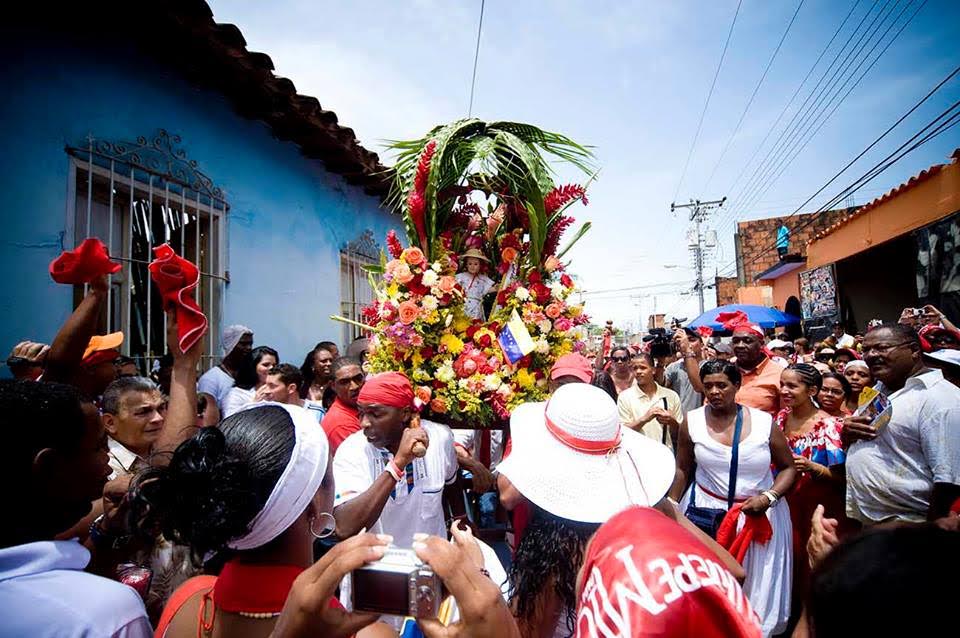 San Juan is very similar to our Ivan Kupala holiday not only in name (Juan is an analogue of our name Ivan), but also in rituals, because the inhabitants of Tenerife, like our compatriots, jump over the fire on this holiday. There is a belief that if you make a wish on the night of San Juan, jump over the fire, and then, at least your feet, but soak in the water, or better to swim, the wish will come true.
San Juan is very similar to our Ivan Kupala holiday not only in name (Juan is an analogue of our name Ivan), but also in rituals, because the inhabitants of Tenerife, like our compatriots, jump over the fire on this holiday. There is a belief that if you make a wish on the night of San Juan, jump over the fire, and then, at least your feet, but soak in the water, or better to swim, the wish will come true.
[notification type=”alert-success” close=”false” ]Different municipalities have their own special rituals and traditions associated with the holiday. Here are some of them.[/notification]
Hundreds of believers in this area, remembering the ancient rituals of the Guanches tribes, drive their goats into the ocean at sunrise. The salt water they bathe in is a natural antiseptic. After bathing, the shepherds milk their clean-washed goats and this is a great opportunity to buy the freshest goat milk. Bathing can be accompanied by impromptu theatrical performances describing the life of the ancient Guanches, which take place right on the ocean.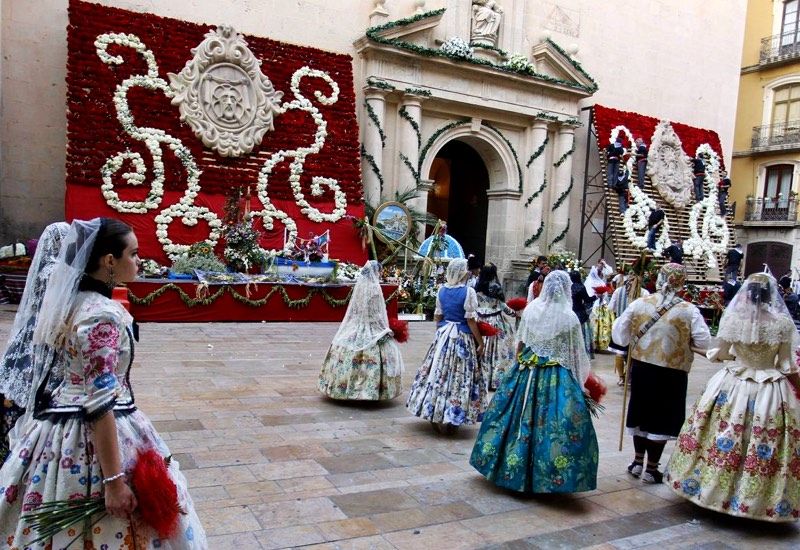
San Juan de la Rambla Silent procession of the “Consecration of the torches”
Residents of the municipality perform quite an interesting ceremony on the feast of San Juan, which involves the passage of people with lit torches in their hands to the local church. The unusual rite is that the torchbearers do not utter a sound until they reach the sacred place.
Firepower “Hachitos” in the municipality of Garachico
Garachico hosts one of the most massive celebrations with fireworks launched into the night sky, lighting an incredible number of bonfires, into which, according to legend, it is necessary to throw a piece of the best fruits in order for the year to be fruitful .
The above-described local traditions only partly characterize the San Juan holiday, since each individual municipality has dozens of its own traditions and rituals that take place on this solemn night. Among such unusual rituals, in addition to jumping over a fire, there are also: a “walk” on burning coals, burning old furniture, and many others.
The holiday is most vividly and massively celebrated in the following places in Tenerife:
– Las Teresitas beach in Santa Cruz de Tenerife;
– Beach de la Nea / Radazul in El Rosario;
– Beach de Punta Larga in Candelaria;
– Puertito de Guimar in Guimar;
– Costa Adeje Beach in Adeje;
– Punta del Hidalgo near La Laguna.
In all the above places, the holiday is accompanied by noisy parties, where Canarian wine flows like water, as well as fireworks of incredible beauty, cutting colorful flashes of the night sky over Tenerife.
All tourists who are going to meet San Juan in Tenerife can wish an unforgettable experience, unlimited fun and do not forget about the safety measures when handling fire.
Feast of Ogeras San Juan in Alicante
For those who are attracted by “hot” Spain, it has long been no secret that every year in June in Alicante, the second most populated and important city in Valencia, a whole series of unusual celebrations dedicated to Spring and Fire takes place – Ogeras San Juan.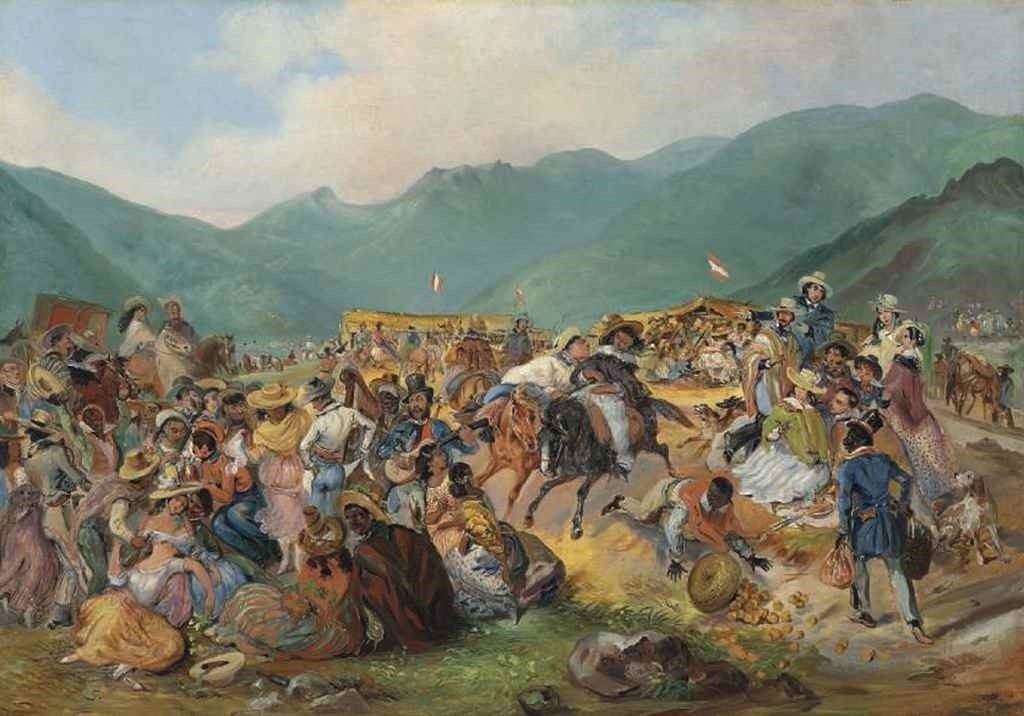
Every year the celebrations begin on June 15 and last for two weeks.
In June Alicante welcomes Hogueras de San Juan – a festival of Bonfires and fireworks dedicated to St. John the Baptist.
Ogeras San Juan – schedule of events from June 15 to June 29
Preparations for the holiday begin a few months before the official start, which will take place on June 15, at 14.00 in Plaza de los Luceros. The First Mascletà Noise Fireworks Show will take place here, and at 19.00 the Orchestra Parade will begin.
From June 16 to June 24, , the Plaza de los Luceros will host daily light and noise shows at 14.00 and evenings at 19.00.
On June 17 at 23.00 , a night fireworks display will take place on Avenida Historiador Vicente Ramos, especially for residents of the Playa San Juan area remote from the center.
Installation of figures (La Planta)
June 19, at midnight , there is a presentation of dolls made by children. They are much smaller in size, but no less cute.
They are much smaller in size, but no less cute.
Fire-rescued doll (Nignot)
On June 20, the jury of the children’s competition selects the winning figure, after which the winner will be announced and the winner will be available to view. And at midnight, the installation of giant figures will begin.
On June 21, everyone will be awakened by the Procession of Brass Bands, and the work of the jury of the competition of huge dolls will begin. In the evening, the winners in each group will be announced, and the winning figure will be open for viewing.
Same evening, at 19.00 , the first flower procession will follow to offer flowers to Virgen del Remedio, the patron saint of the city.
On June 22, from 11.00 , a festive procession of winners will depart from the square in front of the City Hall, and flower processions will resume from 19.00. The choice of a two-day ceremony is not accidental.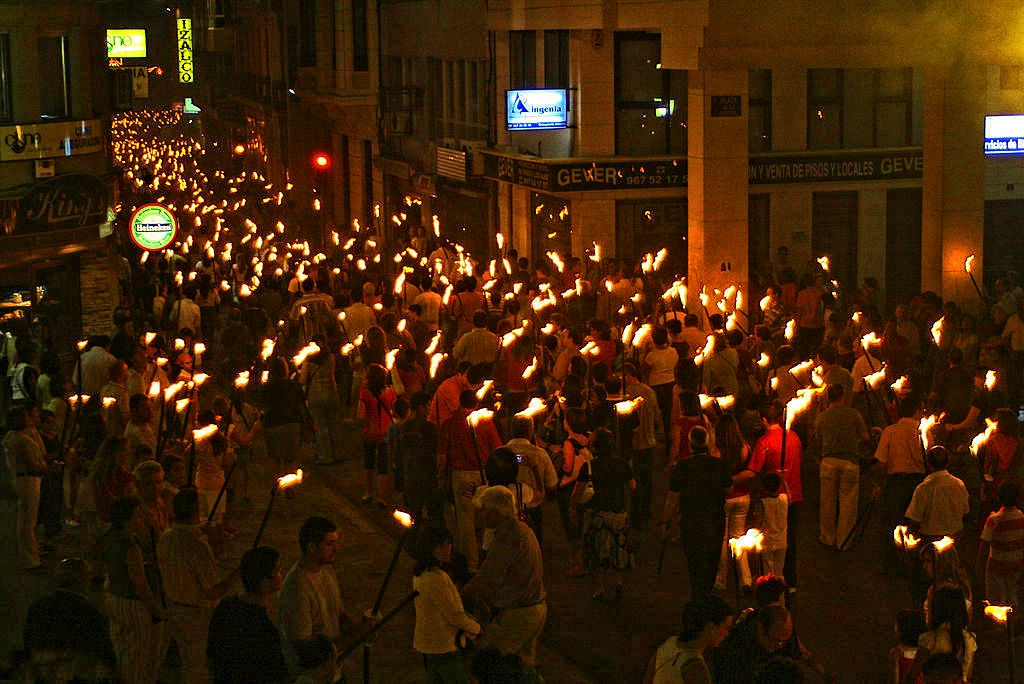 One day is not enough to receive all the gifts. Every year the number of those wishing to bring flowers and gifts increases. Bouquets are placed on the facade of the Cathedral of San Nicolás, thus creating a kind of floral tapestry. From 22.00 festive night festivities in each area – dancing, music and, of course, alcoholic drinks.
One day is not enough to receive all the gifts. Every year the number of those wishing to bring flowers and gifts increases. Bouquets are placed on the facade of the Cathedral of San Nicolás, thus creating a kind of floral tapestry. From 22.00 festive night festivities in each area – dancing, music and, of course, alcoholic drinks.
Offering flowers to the patroness of the city. Source https://hogueras.com
Sunday, June 23, , in addition to the daily performances of musical groups, light and noise shows, at 20.00 from the Plaza de los Luceros to the square in front of the City Hall, the International Folklore Parade will go. It will be colorful. Do not miss.
San Juan Festival Lights photo. Source https://www.alicante.es
From 22.00 until the morning the festivities continue. And it is also on this night that all the inhabitants of Alicante gather in companies and have nightly picnics on the city beaches. Bonfires are a must!
La Crema
On June 24 at 20. 00 a service in honor of St. Juan is held in the Cathedral of San Nicolás de Bari, and at midnight bonfires will blaze, on which the huge dolls made will be set on fire. The signal to start will be a grandiose fireworks display from the fortress of Santa Barbara. The first of them is traditionally burned near the city hall (Plaza del Ayuntamiento), the rest – in different urban areas.
00 a service in honor of St. Juan is held in the Cathedral of San Nicolás de Bari, and at midnight bonfires will blaze, on which the huge dolls made will be set on fire. The signal to start will be a grandiose fireworks display from the fortress of Santa Barbara. The first of them is traditionally burned near the city hall (Plaza del Ayuntamiento), the rest – in different urban areas.
This is how Alicante burns on the night of June 24
Source https://hogueras.com
Saved from the fire
The burning of huge dolls made of wood and papier-mâché is one of the traditional celebrations in Alicante. Masters prepare figures of various heights. At the same time, a two-meter craft is considered the smallest. Others can reach 20 meters in height. Local craftsmen spend up to several months and a lot of money on their implementation. And give them a fire that will deal with them in a few tens of minutes. Dolls are made not faceless, but similar to famous politicians, film actors, fairy tale characters.
Before the start of the celebrations, they arrange a grand puppet show. At the exhibition, a doll is chosen to be “pardoned”. It will not be burned, but transferred to the Ninot Museum – life-size puppets that have ever participated in festivals.
In 2019, the townspeople decided to save a young couple, author of Gallego y Algarra, from the fire. The composition itself can be viewed at the Plaza de Seneca.
Figure rescued from fire, 2019
Fireworks competition from June 25 to 29
The final of Las Fallas is accompanied by grandiose fireworks and a terrible roar.
During the celebrations, the movement of cars along the central streets will be prohibited. Nothing should prevent people having fun to freely move to interesting places. The extravaganza ends on the night of Monday to Tuesday with a spectacular spectacle: the burning of giant dolls.
From June 25th to June 30th, the International Fireworks Competition will take place on the beach del Coco.
 It is said to be lucky if you do it without looking in the mirror afterwards.
It is said to be lucky if you do it without looking in the mirror afterwards.